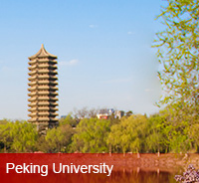From Ownership-Neutrality to Competitive Neutrality
Dec 04-2019
Prof. Lu Feng of the NSD attended an international seminar themed Overcapacity, SOE Reform and Competitive Neutrality in late September and made a speech on two neutralities in focus.
China’s official stance on competitive neutrality and ownership-neutrality was revealed last October. On the occasion of an international seminar that month, PBOC Governor Mr. Yi Gang said China would consider using the principle of competitive neutrality in its treatment of SOEs. The next day, State-owned Assets Supervision and Administration Commission of the State Council (SASAC) spokesperson Mr. Peng Huagang commented on the same topic and pointed out that ownership neutrality should be adopted as well and no discriminatory treatment should be given to SOEs in the making of international rules.
Ownership neutrality could be traced back to an implied rule of GATT/WTO that SOEs should not be subject to special regulations in multilateral trade regime. Moreover, the last decade has witnessed growing calls internationally for the need of introducing SOE-specific rules to ensure fair competition. The trend seems to be that competitive neutrality is extending from domestic to international economic sphere.
Since 2011, the US has been maneuvering for the adoption of competitive neutrality in international lawmaking. KORUS FTA and TPP are two examples. Since December 2017, the US, the EU and Japan have repeatedly demanded to incorporate SOE, industrial subsidy and new competitive rules into WTO reforms. Such moves go hand in hand with the US’ accusation that China and some other countries unfairly wield ‘state capitalism’.
China supports necessary reforms to the WTO, but disagrees substantially with the US on the priority list of topics. In maintaining its pragmatic and reasonable stance, China can dynamically evaluate the evolution of domestic and international situations. Its SOE reform and encouragement of competition since 1990s have shown convergence with competitive neutrality. To realize its goals of high-quality growth, China is motivated to deepen SOE reform and improve competitive rules. Besides, the SOEs are better prepared than before to compete in a more transparent and fair environment. Moreover, SOE rules and some sort of competitive neutrality have been included in bilateral or multi-lateral agreements participated by countries representing a total of 60% of world economy, reflecting a general trend in the evolution of international trade rules.
Besides setting high market-based targets for SOE reform, China can proactively look into the possibility of adding institutional and rule content into the mechanisms of regional and sub-regional partnerships of which it’s a member, so as to fast approach or even lead the innovation of international trade rules. A review of relevant stance might be warranted and it’s advisable for China to apply to and accede to the CPTPP as quickly as possible.







